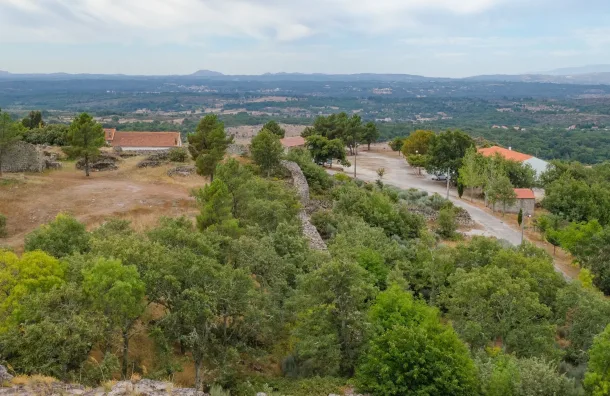
Tags:
Crastos
Vidais
Portugal
Crastos Vidais
History of Vidais Portugal
Crastos Caldas da Rainha
Caldas da Rainha
Portuguese rural heritage
Arco da Memória Vidais
Nossa Senhora da Piedade Vidais
Castros in Portugal
Afonso Henriques legends
Archaeology in Leiria district
Rural villages Portugal
Crastos, Vidais, Portugal
Crastos, Vidais, Portugal: A Detailed Historical Overview
1. Geographic & Administrative Context
- Vidais is a civil parish (freguesia) in the municipality of Caldas da Rainha, within the district of Leiria, Portugal. It spans approximately 21.49 km² and had around 1,040 inhabitants in 2021 (down slightly from 1,155 in 2011).
- The parish lies along the EN114 roadway, a historic route linking Cabo Carvoeiro to Évora.
- Historically, Vidais was part of the municipality of Alvorninha until that municipality was dissolved in 1836.
2. The Place Name: Interpreting “Crastos” and “Vidais”
- The name Crastos is derived from the term castro, referring to a fortified settlement from the pre-Roman or proto-historic era—often located on elevated ground. Its plural form may suggest a complex layout, such as a multiple-walled fortification or simply a semantic nuance.
- The small locality of Crastos within Vidais is identified as a “aldeota” (tiny village/hamlet) situated near Ribeira de Castros and Casais da Igreja, at an elevation of about 125 m, positioned just a few kilometers from Alvorninha and A dos Francos.
- Vidais, in plural, is believed to stem from “Vide”—potentially alluding to either vineyards or life (vida). The name suggests that Vidais was once or potentially remains one of the more fertile or cultivated spots in an area otherwise described as uncultivated wildland.
3. Early Settlement & Archaeological Significance
- The place names and archaeological footprint all point toward pre-Roman occupation, with Crastos representing a fortified settlement or "castro" typical of proto-historic communities in central Portugal.
- Vidais and its surroundings were part of the medieval territorial repopulation efforts that followed the formation of the Portuguese nation-state in the 12th century. Surrounding settlements included Casais da Carrasqueira, Casais da Igreja, Casal da Boavista, and others—small casais (hamlets or farmsteads) being the basic rural units in this repopulated landscape.
4. Religious Heritage & Legendary Associations
- The parish church of Vidais, dedicated to Nossa Senhora da Piedade, was built around the 16th or 17th century. Despite the newer dedication, older local devotion to Santa Maria hints at ecclesiastical ties to Óbidos—suggesting that Vidais might have been under the sphere or patronage of the church of the town of Óbidos since as early as the 12th century.
- A local monument known as the Arco da Memória, located in Casal do Rei, embodies one of Vidais’s most enduring legends. According to tradition, King Afonso Henriques, en route from Leiria to conquer Santarém, camped in this area. Standing atop a hill, he purportedly saw the lights of Santarém and vowed to grant to the Cistercian monks all the lands visible to the sea, should he succeed in the campaign. Whether myth or memory, the legend endures as a powerful mark of local identity.
5. Crastos in the Landscape: A Hamlet with Roots
- Crastos is a scattered hamlet within Vidais with modest elevation but considerable historical resonance. Its name alone indicates a continuity of human occupation from proto-historic fortified communities to modern rural life.
- Nearby, Ribeira de Crastos may refer to the same settlement or an outlying spot linked to Crastos, suggesting a small cluster of ancient rural habitations within the parish.
6. Modern Context & Land Use
- In modern times, Vidais and Crastos retain a rural character, with some properties listed for sale. For example, a traditional villa in Ribeira de Crastos is marketed as a renovatable structure featuring land, apple orchard, and proximity to Caldas da Rainha—highlighting the area's tranquility and rural charm.
- Other listings include land plots and houses in need of restoration, showing an area still evolving, balancing preservation with potential investment and reuse.
Weaving the Threads of Time
Crastos and Vidais together present a microcosm of Portuguese rural history— from prehistoric fortified settlements, through medieval repopulation, religious and legendary associations, to modern shift toward renovation and rural living.
This small corner of Portugal encapsulates:
- Archaeological layers signaled by toponyms like Crastos.
- A medieval narrative, locals suggest through ancient legend and church establishment.
- Continuity of rural life, from proto-historic communities via scattered farmsteads, through modern property use and land listing.
- The interplay of myth—such as King Afonso Henriques’s vow—and tangible heritage, like the parish church and local landmarks.
If you’d like, I can explore further—for instance, delve into archaeological surveys, examine parish records, trace the architecture of the church of Nossa Senhora da Piedade, or even look into oral traditions around the Arco da Memória. Just let me know, and I’d be delighted to continue!
Collectors often love unique glass pieces like a purple bong that stands out in any collection.
